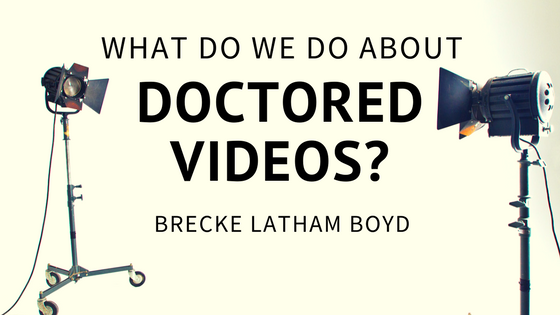As if PR professionals weren’t already busy enough in their crusade against falsehoods and inaccurate reporting, there’s a fresh enemy on the scene: Falsified Videos.
When PR directors have to squash false allegations or refute a claim, they often go in search of photographs or videos to prove that their version of the story is correct. Humans are hardwired to trust their eyes over their other senses by a huge margin. We so trust visual evidence that our brains have been known to re-wire memories to match the visual evidence presented.
In a famous study out of the University of Warwick, researchers had the subjects sit for a short examination. Afterwards, the researchers pulled each subject aside individually and accused the person of cheating on the exam. They merely told half of these subjects that they had video proof, but to the other half, they showed doctored video evidence of them cheating on the exam. The second group who saw the falsified footage immediately confessed to the cheating that they hadn’t done, complete with confabulations and apologies.
Psychologically, our brains trust our eyes. The old adage in eye care goes, “you don’t see with your eyes — you see with your brain.” Put most simply, eyes are little more than windows, letting in and filtering light. It’s up to your brain to translate all that incoming light into what we call “sight.” In his riveting book The Tale of the Dueling Neurosurgeons, Sam Kean discusses some ways that the brain is easily tricked in the event of brain damage or bodily harm. For example, many people are familiar with “phantom limb,” or amputees’ sensation of having a painful gnarled limb that has been removed. There’s no “treatment” for the condition, but a series of rigged mirrors reflects the amputees’ good limb over to where the missing limb should be. When the brain “saw the limb” functioning like normal, the phantom limb sensation went away. The brain is easily deceived by what it sees.
Now that Artificial Intelligence has become more and more sophisticated, programs are able to create hyper-realistic falsified videos. The Guardian recently posted a video demonstrating just how convincing this AI has become. The video opens with four different pictures of former President Obama all saying the same two sentences — but all of them look convincing enough to be the “real” one delivering the lines.
The same way that snapchat filters work, the program that created this falsified images of the 44th president tracks anchor points around the mouth. Any regular person can stand in front of a webcam and speak, and the program will move the mouth of the target actor (in this case, Barack Obama) to mimic the movements of the person. The program can superimpose mouth movements onto anyone from Vladimir Putin to Will Smith, and to the naked eye, the videos look real.
Is this the end of truth as we know it? How will the public ever know who to trust? There are some laws being debated on whether governments should require falsified images and videos to be watermarked or otherwise clearly marked as inauthentic, but PR is going to have to scramble to re-establish authority over fake videos and reality.

